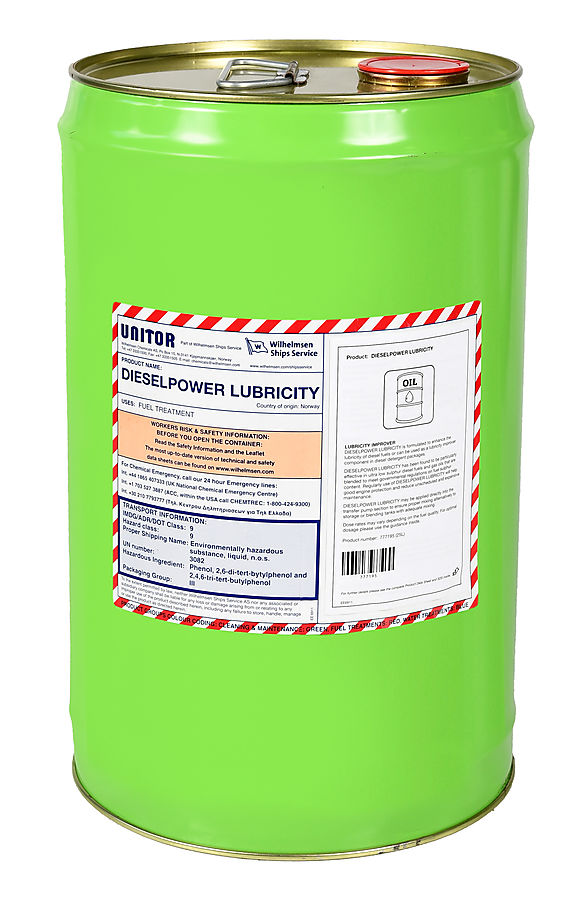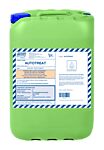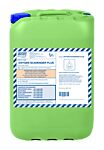


Last updated: 30/04/2025 05:20:04
DIESELPOWER LUBRICITY 25 LTR
Product Code
- Product group:
- 650
- Product number:
- 779094

Unitor™ DieselPower™ Lubricity is the solution for poor lubricity with marine distillate fuels. The product is very effective in improving the lubricity of distillate fuels to protect the fuel pumps from excessive wear.

Product information
This product supersedes product no: 777195
Unitor DieselPower Lubricity has been found to be particularly effective in ultra-low sulphur diesel fuels and gas oils that are blended to meet governmental regulations on fuel sulphur content.
Unitor DieselPower Lubricity also provides excellent performance as a lubricity improver component in diesel detergent packages and does not affect the water emulsification tendency of a fuel as measured by ASTMD-1094.
Features
- Improves the lubricity of low sulphur diesel fuels
- Can be used as a stand-alone product or component in diesel packages
- Effective at 50-150 ppm range in meeting the HFRR requirement for lubricity specifications
- Does not interact with the fuel
Benefits
- Protects your fuel pump from wear to avoid unscheduled and expensive maintenance
- Quality is ensured so you can rest easy with good lubrication protection
- You can safely use the product in all types of fuels
Specification
General
| Invent Hazard Material (IMO/EU) classification | C-6 |
|---|
Physical properties
| Appearance | Yellow |
|---|---|
| Density [kg/dm3] | 0,895 |
| Flash Point [°C] | 180 |
| Form | Liquid |
| Materials compatibility | Teflon, Viton , Plasite 10-7122, Plasite 10-9500, Mild Steel, Mild Aluminium, Brass, 304 SS, 316 SS and copper |
| Pour Point [°C] | 6 |
| Solubility | Insoluble in water, soluble with most organic solvents |
Technical data
| Not Compatible | Natural Rubber, Vinyl, Polyethylene, Neoprene, PVC, Hypalon, Buna-N , Polypropylene, Plexiglas, Ethylene, Propylene Rubber and Polyurethane |
|---|
Safety Data Sheet (SDS)
Documents
Directions for use
Dosing Method Preferable application of DieselPower Lubricity is directly into the transfer pump suction to ensure proper mixing. Product may be added to storage or blending tanks with adequate mixing. Dosage of DieselPower Lubricity may vary depending on the fuel quality.
Best dosing and storage temperature: 20 °C (68 ° F) - 40 °C (104 °F)
Sampling and Testing DieselPower Lubricity also provides excellent performance as a lubricity improver component in diesel detergent packages and does not affect the water emulsification tendency of a fuel as measured by ASTMD-1094.
Dosing and Control The normal dosage of DieselPower Lubricity is between 100 and 200 ppm (100 to 200 ml per m3 fuel). Independent testing has shown that an application of around 125ppm can improve the HFRR wear scar performance of ULSD to below the specification level of 460um. DieselPower Lubricity may be blended with other components into diesel detergent packages for ultra-low sulphur diesel fuel and has no known adverse interaction with common components such as detergents, pour point improvers, cetane improvers or antifoams.




